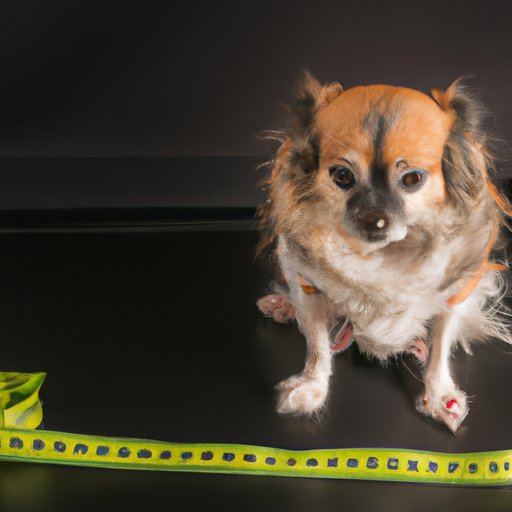I. Introduction
Obesity is a major health concern for dogs, and little dogs are no exception. Overfeeding your furry friend with high-calorie treats and table scraps can lead to weight gain and associated health problems. In this article, we’ll explore ways to help your little dog shed those extra pounds and get back to a healthy weight.
II. Limit treats and table scraps
One of the biggest contributors to dog obesity is overfeeding them with treats and table scraps. While it may seem harmless, the excess calories can quickly add up and lead to weight gain. Instead of cutting out treats altogether, aim to limit the amount your little dog receives.
You can also try low-calorie treat options such as carrots, green beans, or small pieces of cooked chicken. Using treats as rewards for good behavior during training sessions can also help control the portion size.
III. Increase physical activity
Regular exercise is not only good for your dog’s physical health but also their mental well-being. Physical activity can help burn calories, build lean muscle mass, and improve mobility. Engaging your little dog in activities like walks, runs, and playtime can be a great way to increase their physical activity level.
You can also try incorporating games like fetch, tug-of-war, or hide-and-seek into your little dog’s routine. These activities can be done indoors or outdoors and are great for keeping your dog active and entertained.
IV. Switch to a high-quality, low-calorie dog food
The right nutrition is essential for your dog’s overall health, and little dogs are no exception. Choosing a high-quality, low-calorie dog food can help your little dog maintain their weight and stay healthy. Look for dog foods that are specifically formulated for weight management and contain high-quality ingredients such as lean proteins and whole grains.
Make sure to check the labels and avoid dog foods that are high in calories, fat, and sugar. Always consult with your veterinarian before making any changes to your dog’s diet.
V. Feed smaller, more frequent meals
Feeding your little dog smaller, more frequent meals throughout the day can help control their hunger and prevent overeating. Instead of feeding your dog a large meal once or twice a day, try splitting their daily meals into smaller portions.
As a general rule, it’s best to feed your little dog 2-3 times a day. Make sure to measure the portion sizes carefully and avoid overfeeding.
VI. Incorporate healthy snacks
If you want to give your little dog a treat, opt for healthy options such as fruits, vegetables, or low-fat meats. Some good options include apple slices, blueberries, and cooked sweet potatoes.
Avoid feeding your little dog sugary or fatty foods such as donuts, cakes, or fried chicken. These foods are not only high in calories but also lack the nutrients your dog needs to stay healthy.
VII. Consider weight loss supplements
In some cases, weight loss supplements may be recommended to help your little dog lose weight. These supplements can help boost their metabolism and reduce their appetite.
However, it’s important to talk to your veterinarian before giving your dog any weight loss supplements. Some supplements may contain harmful ingredients or interact poorly with other medications your dog is taking.
VIII. Monitor progress
Once you start implementing these tips, it’s essential to monitor your little dog’s progress. Keep track of their weight, body condition score, and physical activity level.
If you notice any significant changes, consult with your veterinarian. They can help develop a personalized weight loss plan for your little dog and adjust their diet or exercise routine as needed.
IX. Conclusion
Helping your little dog lose weight and achieve a healthy lifestyle requires effort and dedication. By limiting treats, increasing physical activity, and providing healthy nutrition, you can help your furry friend shed those extra pounds and stay healthy. Monitoring their progress is essential, and don’t forget to consult with your veterinarian if you have any concerns. With time, patience, and a lot of love, your little dog can achieve their weight loss goals and live a long, happy life.
(Note: Is this article not meeting your expectations? Do you have knowledge or insights to share? Unlock new opportunities and expand your reach by joining our authors team. Click Registration to join us and share your expertise with our readers.)
